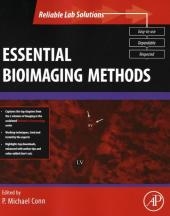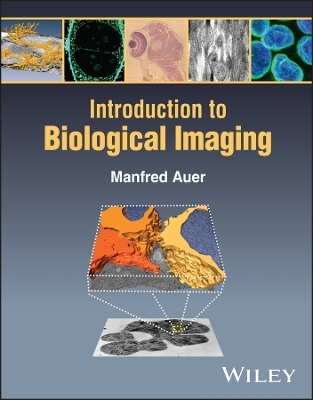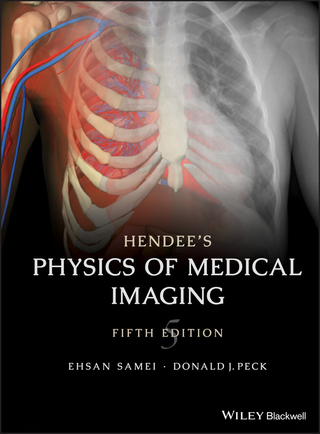
Essential Bioimaging Methods
Academic Press Inc (Verlag)
978-0-12-375043-3 (ISBN)
Need a tested, reliable method that works? Put Essential Bioimaging Methods to work for you. Editor Michael Conn has hand-picked the most robust methods from his previously-published volumes in the Methods in Enzymology series. Many of these methods have been briefly updated by the authors that created them and use them in their research, and this book further refines and organizes existing content and focuses on methods that work, including MRI, fMRI, PET, Microscopic optical imaging and other. Part of the Reliable Lab Solution series, this volume provides clear advice and explicit protocols, providing updates to classic, tried-and-true methods and an essential addition to the bookshelf or workbench of any researcher in the field.
P. Michael Conn is the Senior Vice President for Research and Associate Provost, Texas Tech Health Sciences Center. He is The Robert C. Kimbrough, Professor of Internal Medicine and Cell Biology/Biochemistry. He was previously Director of Research Advocacy and Professor of Physiology and Pharmacology, Cell Biology and Development and Obstetrics and Gynecology at Oregon Health and Science University and Senior Scientist of the Oregon National Primate Research Center (ONPRC). He served for twelve years as Special Assistant to the President and Associate Director of the ONPRC. After receiving a B.S. degree and teaching certification from the University of Michigan (1971), a M.S. from North Carolina State University (1973), and a Ph.D. degree from Baylor College of Medicine (1976), Conn did a fellowship at the NIH, then joined the faculty in the Department of Pharmacology, Duke University Medical Center where he was promoted to Associate Professor in 1982. In 1984, he became Professor and Head of Pharmacology at the University of Iowa College of Medicine, a position he held for eleven years. Conn is known for his research in the area of the cellular and molecular basis of action of gonadotropin releasing hormone action in the pituitary and therapeutic approaches that restore misfolded proteins to function. His work has led to drugs that have benefitted humans and animals. Most recently, he has identified a new class of drugs, pharmacoperones, which act by regulating the intracellular trafficking of receptors, enzymes and ion channels. He has authored or co-authored over 350 publications in this area and written or edited over 200 books, including texts in neurosciences, molecular biology and endocrinology. Conn has served as the editor of many professional journals and book series (Endocrinology, Journal of Clinical Endocrinology and Metabolism, Endocrine, Methods, Progress in Molecular Biology and Translational Science and Contemporary Endocrinology). Conn served on the National Board of Medical Examiners, including two years as chairman of the reproduction and endocrinology committee. The work of his laboratory has been recognized with a MERIT award from the NIH, the J.J. Abel Award of the American Society for Pharmacology and Experimental Therapeutics, the Weitzman, Oppenheimer and Ingbar Awards of the Endocrine Society, the National Science Medal of Mexico (the Miguel Aleman Prize) and the Stevenson Award of Canada. He is the recipient of the Oregon State Award for Discovery, the Media Award of the American College of Neuropsychopharmacology and was named a distinguished Alumnus of Baylor College of Medicine in 2012. Conn is a previous member of Council for the American Society for Cell Biology and the Endocrine Society and is a prior President of the Endocrine Society, during which time he founded the Hormone Foundation and worked with political leadership to heighten the public’s awareness of diabetes. Conn’s students and fellows have gone on to become leaders in industry and academia. He is an elected member of the Mexican Institute of Medicine and a fellow of the American Association for the Advancement of Science. He is the co-author of The Animal Research War (2008) and many articles for the public and academic community on the value of animal research and the dangers posed by animal extremism. His op/eds have appeared in The Washington Post, The LA Times, The Wall Street Journal, the Des Moines Register, and elsewhere. Conn consults with organizations that are influenced by animal extremism and with universities and companies facing challenges from these groups.
I. Imaging in Animal and Human Models 1. Positron Emission Tomography: An Advanced Nuclear Medicine Imaging Technique from Research To Clinical Rakesh Kumar, Suman Jana 2. Biophysical Basis of Animal Magnetic Resonance Imaging of Small Animals (Bruce M. Damon, John C. Gore) 3. Functional Magnetic Resonance Imaging of Macaque Monkeys (Kiyoshi Nakahara) 4. Atlas Template Images for NHP Neuroimaging: Baboon and Macaque (Kevin Black) 5. MRI of Brain Function (Stuart Clare) II. Imaging of Receptors, Small Molecules, and Protein-Protein Interactions 6. PET Receptor Assay With Multiple Ligand Concentrations: An Equilibrium Approach (James E. Holden, Doris J. Doudet) 7. Estimation Of Local Receptor Density B’(Max) And Other Parameter Via Multiple-Injection PET Experiments (Evan Morris) 8. Magnetic Resonance Imaging In Biomedical Research: Imaging Of Drugs And Drug Effects (Markus Rudin, Nicolau Beckmann, Martin Rausch) 9. Imaging Myocardium Enzymatic Pathways With Carbon-11 Radiotracers (Carmen S. Dence, Pilar Herrero, Sally W. Schwarz, Robert H. Mach, Robert J. Gropler, Michael J. Welch) III. Disease Models 10. Molecular And Functional Imaging of Cancer: Advances In MRI And MRS (Arvind P. Pathak, Barjor Gimi, Kristine Glunde, Ellen Ackerstaff, Dmitri Artemov, Zaver M. Bhujwalla) 11. A Modified Transorbital Baboon Model of Reperfused Stroke (Anthony L. D’Ambrosio, Michael E. Sughrue, J. Mocco, William J. Mack, Ryan G. King, Shivani Agarwal, E. Sander Connolly, Jr.) 12. Structural And Functional Optical Imaging of Angiogenesis In Animal Models (Richard L. Roberts, Pengnian Charles Lin) 13. MRI of Animal Models of Brain Disease (Louise van der Weerd, David L. Thomas, John S. Thornton, Mark F. Lythgoe) 14. Magnetic Resonance Imaging in Animal Models of Pathologies (Pasquina Marzola, Andrea Sbarbati) 15. Application Of Combined Magnetic Resonance Imaging, Histopathologic And Function Studies For Evaluation Of Aminoguanidine Following Traumatic Brain Injury In Rats (Jia Lu, Shabbir Moochhala) IV. Preparation of Materials 16. Vascular Targeted Nanoparticles for Molecular Imaging and Therapy (Samira Guccione, King C.P.Li, Mark D. Bednarski) 17. Generation of DOTA-Conjugated Antibody Fragments For Radiommunoimaging (Peter M. Smith-Jones, David B. Solit) V. General Methods 18. The Application of Magnetic Resonance Imaging And Spectroscopy (Kishore K. Bhakoo, Jimmy D. Bell, I. Jane Cox, Simon D. Taylor-Robinson) 19. Vozelation Methods For Genome Scale Imaging Of Brain Gene Expression (Daniel M. Sforza, Desmond J. Smith)
| Reihe/Serie | Reliable Lab Solutions |
|---|---|
| Verlagsort | San Diego |
| Sprache | englisch |
| Maße | 191 x 235 mm |
| Gewicht | 910 g |
| Themenwelt | Medizin / Pharmazie ► Medizinische Fachgebiete ► Radiologie / Bildgebende Verfahren |
| Naturwissenschaften ► Biologie ► Allgemeines / Lexika | |
| ISBN-10 | 0-12-375043-1 / 0123750431 |
| ISBN-13 | 978-0-12-375043-3 / 9780123750433 |
| Zustand | Neuware |
| Haben Sie eine Frage zum Produkt? |
aus dem Bereich


